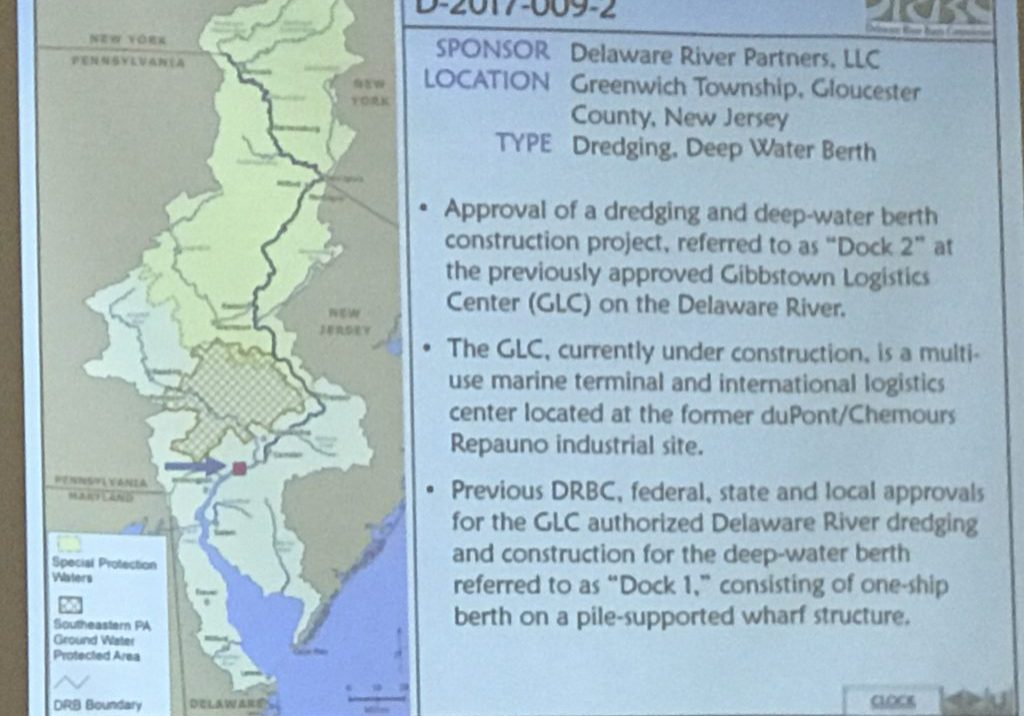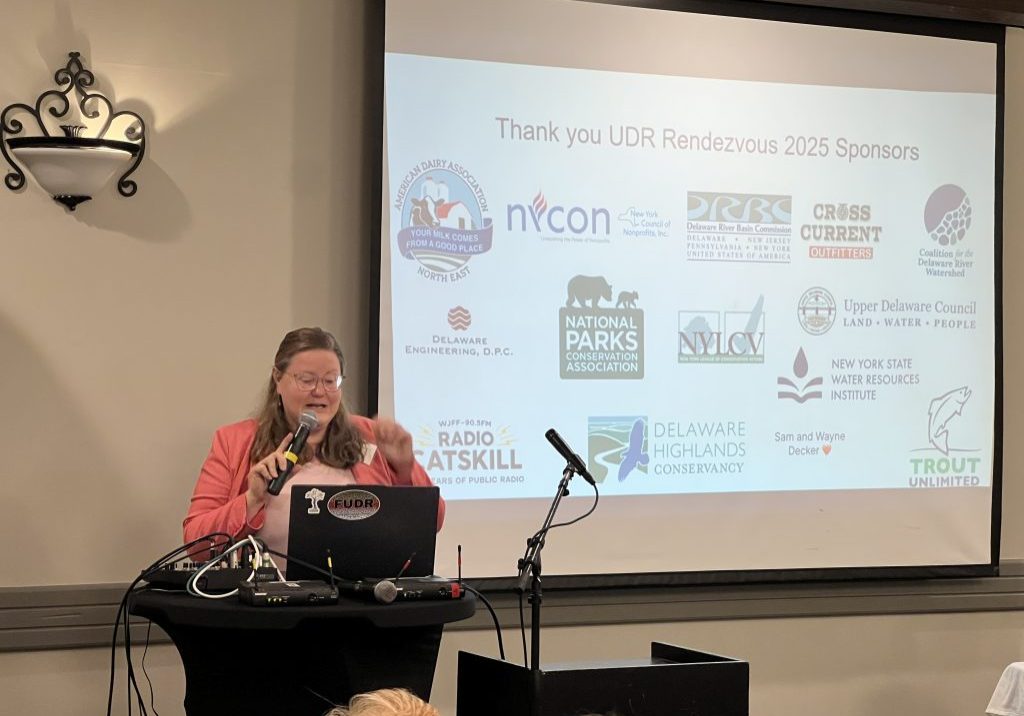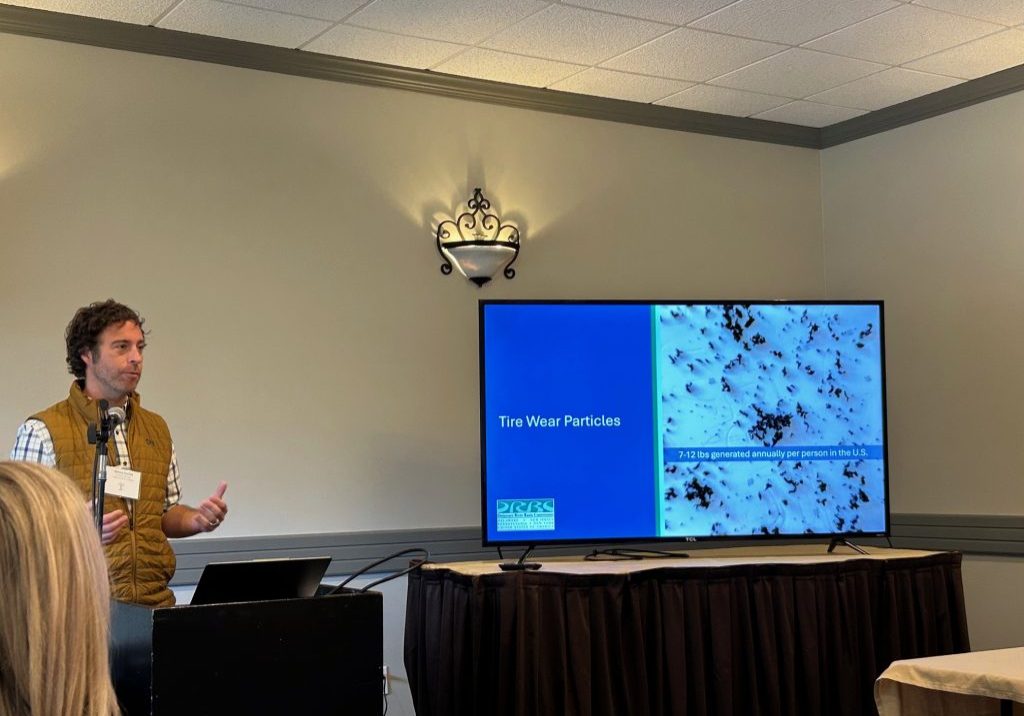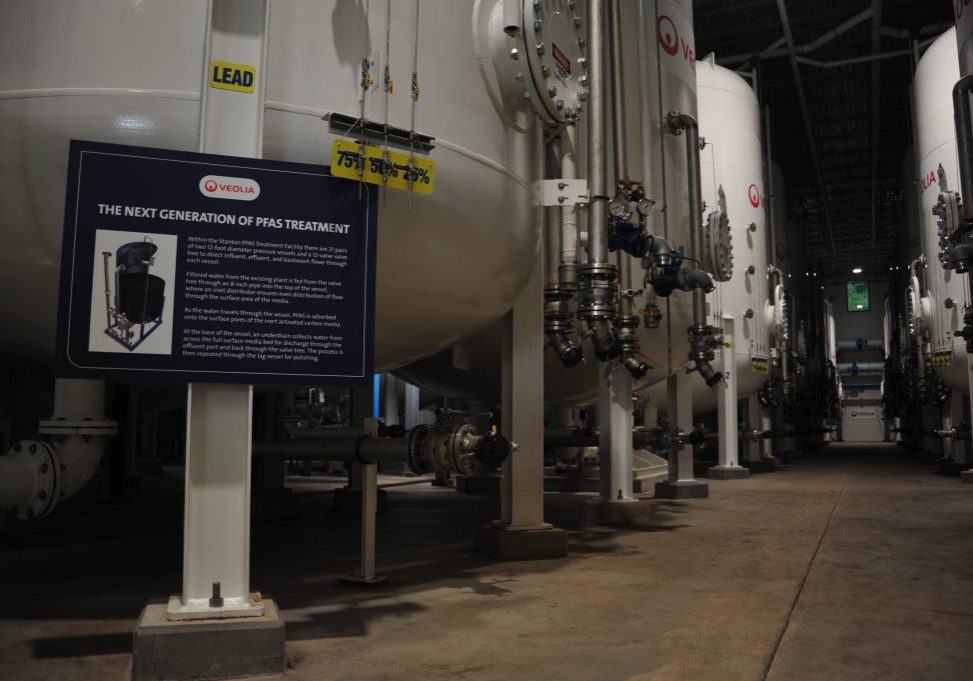
Sewage plant operators resist pending EPA water quality rules for Delaware River
| April 7, 2025
Several wastewater treatment operators on the Delaware River are pushing back against pending U.S. Environmental Protection Agency regulations that would improve dissolved oxygen levels in a troubled 38-mile stretch of the Delaware River between Philadelphia, Pa., and Wilmington, Del.
The proposed rules to upgrade the treatment plants amount to a multi-billion-dollar proposition that has been at least 12 years in the making. A recent survey by Delaware Currents reveals that most of the major treatment plants object to the planned rules as too costly, based on unsound premises and burdensome to their ratepayers.
In a survey of the 10 utilities with wastewater treatment plants identified as significant contributors to the drag on oxygen levels in the river, only the Morrisville Municipal Authority, along the river’s edge in Bucks County, Pa., which was already planning to build a new, state-of-the-art treatment plant, did not object to the proposed rules.
Of the rest that responded, many sounded like the Philadelphia Water Department, which expressed a shared desire for a cleaner Delaware River but questioned the science and affordability of the proposed rules.
“PWD agrees that water quality standards need to be updated,” the department said. “However, as currently drafted, EPA’s proposed rule is overly stringent, not developed with sound science, and could significantly increase PWD customer bills.”
The EPA said on April 1 said that it would finalize a rule revising water quality standards for that section of the river, which has suffered from a so-called oxygen sag, or a depletion of dissolved oxygen, which is vital for the propagation of fish, particularly the endangered Atlantic sturgeon. According to a consent decree reached in federal court, the deadline for that rule is June 30.
The rules specifically aim to reduce ammonia from urine that the plants are ill-equipped to address. When ammonia reaches freshwater, it becomes an essential ingredient in a biological process that can lower oxygen levels, which is harmful to fish.
Ancient history
Environmental advocates initiated a legal petition to tighten regulations on oxygen-eating pollution in the river in 2013. The Delaware River Basin Commission took up the problem for 10-plus years to study the problem and seek possible — albeit costly — solutions.
In December 2022, the EPA sided with the environmental advocates who asked that the agency, and not the DRBC, formulate the rules. But even the EPA was not fast enough and in October 2024, the Delaware Riverkeeper Network sued the EPA, claiming it was too slow. In response, the EPA agreed to finalize those rules “on or before June 2025.”
Supporters of the new rules say that one of the main beneficiaries will be the Atlantic sturgeon. The health of its population — or lack thereof — has been used as a barometer of the pollution in that urban corridor of the river.
You can trace the Atlantic sturgeon’s evolutionary lineage back about 200 million years. It’s a fish that has outlived mass extinction events, including the one that killed off the dinosaurs. But the sturgeon is struggling to co-exist with human civilization. The long, bony-plated fish was added to the federal Endangered Species Act list in 2012.
The population in the Delaware River, which studies have indicated is genetically unique, is particularly imperiled. Researchers estimate there are just a few hundred spawning adults in the river, a number that has dwindled dramatically from as many as 360,000 in the 19th century.
While a caviar craze marked the first major hit to the sturgeon’s population, by the mid-20th century, water pollution became the greatest challenge. Choked by industrial and human waste, a “dead zone” in the Delaware formed that created a barrier to reproduction for many migratory fish.
The advent of the Clean Water Act in 1972, along with robust federal grants, led to major improvements in water quality. Municipal wastewater treatment plants installed new technology to treat harmful bacteria from human feces before reaching the waterway.
But treatment methods to tackle urine were left out, and from the Reagan administration forward, federal funding to build new treatment systems was hollowed out. That set up the current dynamic: oxygen levels in the river near Philadelphia are much improved but not great, which advocates say hurts the sturgeon’s ability to reproduce.
In 2013, the Riverkeeper Network filed a petition with the Delaware River Basin Commission — an interstate entity that regulates the river’s resources — to create new protections, to raise the oxygen standards from “fish maintenance” to “fish propagation.” In other words, provide enough oxygen for not only adult sturgeon to survive, but allow their more oxygen-sensitive young to flourish.
Estimates by the DRBC in 2021 determined that, depending on their strictness, new oxygen rules could collectively cost area water utilities from $1 billion to $5.5 billion.
In an analysis included with its December 2023 release of draft regulations, the EPA estimated that bumping the oxygen levels enough to support Atlantic sturgeon spawning would cost seven utilities about $3.4 billion to implement over 25 years. Some utilities, however, say those figures are gross underestimates.
Survey says…
No utility has more on the line than the Philadelphia Water Department, the largest contributor to oxygen-eating pollution among all of the potentially affected utilities.
By the EPA’s estimates, PWD would need to spend about $77.9 million a year to come into compliance at its three wastewater treatment plants, which, over 25 years, would come to about $1.9 billion.
The EPA estimates it would amount to an increase of $1.50 a month per household among Philadelphia’s large rate base of 1.6 million customers. But the PWD said it determined total expenses would actually run about $180 million a year, costing customers an additional $22.17 a month.
“EPA greatly misrepresented the costs of the proposed rule,” the PWD said, adding that the department performed a more comprehensive analysis that included costs, such as site preparations like grading and environmental remediation, which the EPA had not.
Other utilities that responded were: the Camden County Municipal Utilities Authority, DELCORA, Hamilton Township, and the Morrisville Municipal Authority.
Trenton Water and Sewer and the Willingboro Municipal Utilities Authority also responded, but only to say that they believed they would not be affected by the proposed rule.
The Gloucester County Utilities Authority, the Lower Bucks Joint Municipal Authority and the City of Wilmington did not respond by deadline.
Van Rossum said that the “big three” contributors to the so-called oxygen sag are the PWD, Camden and Wilmington, an outlook that aligns with estimates by regulators.
The Camden County Municipal Utilities Authority indicated that its costs could be higher than the EPA’s estimates of $405 million over 25 years. “Depending on the exact requirements,” the utility’s capital costs could “easily exceed” $500 million, the authority said, plus another few million dollars in annual operational costs. All of that would lead to a minimum increase for its 500,000 ratepayers of $60 a year.
Hamilton Township in Mercer County, N.J., also cited costs higher than EPA estimates. The EPA projected total costs of about $82.5 million but a township spokesperson cited estimates of $90 million to $100 million.
Survey respondents nearly uniformly said they supported the idea of a cleaner, more oxygen-rich Delaware River, and some even recognized the need for regulatory change.
“PWD agrees that water quality standards need to be updated to reflect the fact that the Atlantic sturgeon are propagating and growing in the river,” the PWD said. But many took umbrage with the particulars.
The PWD said its own research showed that juvenile Atlantic sturgeon were already spawning and growing under current dissolved oxygen conditions. The utility said it was on board to do more under new regulations, but “at a scale and pace that does not significantly increase customer water bills.”
The Camden County authority said it “believes there are real questions that need to be answered in relation to the science of the draft rule” proposed by the EPA.
Those questions include whether the target oxygen levels in the draft rule are truly attainable, why the EPA is “only” focusing on treatment plants near Philadelphia as opposed to those upstream, and why the financial burden will fall on “the most disadvantaged citizens of the Delaware Valley.”
Both Philadelphia and Camden also said their efforts would be complicated by concurrent efforts to reduce combined sewer overflows, known as CSO, from their cities.
Combined sewer systems are an archaic form of engineering that blends stormwater from streets and sewage water from homes and businesses into the same pipes. During rain storms, the pipes intentionally overflow into area waterways to help prevent sewage from overwhelming treatment plants or backing up into homes.
The Philadelphia Water Department noted that its CSO program is estimated to cost billions of dollars and said new dissolved oxygen regulations would “directly compete with state and federal funding for CSO mitigation.”
Smells fishy?
Van Rossum remained unmoved from her conviction that new federal regulations are sorely needed, especially to protect the Atlantic sturgeon.
“The solutions are known and clear, and they have given up all their opportunities over all these years to get state and federal assistance to solve the problem,” van Rossum said. “They point the finger at the Delaware Riverkeeper Network… and sit across the table from me and cry foul and tell me how impossible it is and expensive it is,” while the department employs lawyers, scientists and lobbyists to fight the regulations, van Rossum added.
For van Rossum, the solution to the dissolved oxygen problem is simple: These utilities are responsible for discharging pollution into waterways that harms the sturgeon, and so they are responsible for cleaning it up.
Not all utilities surveyed pushed back strongly on the potential new regulations. The Morrisville Municipal Authority said it is progressing toward construction of a new wastewater treatment facility that will position it to “lead on this issue.”
The authority also spoke of a deeper commitment to address pollution: “MMA has enjoyed good relationships with our direct regulatory agencies. It would be not just shortsighted, but economically and socially regressive to oppose sensible efforts to improve environmental standards, which can apply to our air and water.”
More carrot, less stick
Andy Kricun, the former executive director of the Camden County authority and current managing director of the nonprofit clean-water consulting firm Moonshot Missions, said he empathizes with those who want to see the river cleaned up and the utilities and ratepayers who will have to pay to do it.
“The water quality goal is a laudable one, but shouldn’t be decoupled from affordability considerations,” Kricun said.
Having worked with environmental justice communities in Camden, where there are efforts to get the city’s youth acquainted with its waterways through fishing and paddling, Kricun said he understands the importance of having healthy, clean ecosystems. But, with more than 50 percent of the city’s children living in poverty, utility bills are also a real concern, he said.
“They deserve the same water quality that communities have upstream. But on the other hand is affordability, and there’s a tension between the two,” Kricun said.
Kricun bemoaned the longtime decline in federal water infrastructure funding, which even after some boosts from Biden-era funding, offers pennies on the dollar for what it used to provide to water utilities. He suggested creative solutions such as “century bonds,” an innovative financial mechanism recently used by Washington, D.C.’s water utility to space out infrastructure costs over 100 years, rather than the few decades that is currently common.
Still, Kricun expressed a desire to see regulators use a more carrot-and-stick approach, where new rules are less onerous but regulators work with and incentivize utilities to find creative technical solutions to reach desired outcomes.
“They should not only look at enforcement, at a number, but also look at working with utilities to voluntarily improve their effluent,” Kricun said.








Great article! I am saddened to see PWD saying the science of the ruling isn’t sounds–many regional agencies contributed data and it seems all other governing and research entities think the science is, in fact, sound.